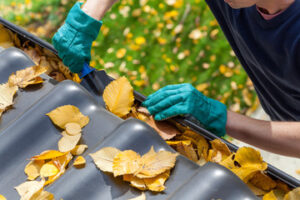Mold growth and staining are not just a cosmetic concern; they can pose serious health risks. Exposure to toxic mycotoxin spores can lead to allergies, lung problems, and even death.

A thorough mold remediation process begins with a detailed inspection and assessment. This involves determining the extent of the mold, the type of mold present, and the conditions that led to its growth. Call Mold Removal In Brooklyn today for an appointment!
Identifying The Source Of Moisture
Mold can grow in damp or humid areas and thrives on organic materials such as wood, paper, carpet, and fabrics. It’s impossible to get rid of all mold growth, but the best approach is to clean the area thoroughly and address the source of moisture that is causing it to grow.
A professional will take several steps to identify the extent of the problem and assess the type of mold that is growing, as some types are more harmful than others. They will also look at how it has impacted the building materials and structure as well as the air quality of the property.
Initially, the professional will attempt to control the spread of mold by misting the contaminated spot and using wet/dry vacuums and dehumidifiers. They will then begin the actual cleaning and removal of the contaminated materials. Porous materials like drywall and insulation will be bagged and thrown away, while non-porous items such as hard plastic, concrete, and metal can usually be cleaned and disinfected.
Once the visible mold is removed, the professionals will scrub and wipe down all other surfaces to ensure that all the spores are dead. This can be done with household products, including bleach (a 3% solution is recommended) and vinegar. It is important to note that the cleaning should be done as soon as possible, as a delay may result in worsened or even permanent damage to the materials.
For a quick solution, try pouring some white vinegar into a spray bottle and applying it directly to the contaminated surface. If you want a more thorough solution, take a hint from our cleaning professionals and soak the affected areas of dark mold for 15 minutes before scrubbing them clean.
Creating Containment Barriers
When mold grows, it releases tiny spores that drift through the air. These spores can infiltrate other areas and contaminate them as they search for new growing conditions. This is why a critical step in mold removal is to contain the contaminated area. This involves setting up physical barriers to prevent spores from spreading throughout your home or business during the cleanup process. These barriers are typically made of plastic sheeting. In addition, a negative air machine with HEPA filtration should be set up in the contained area to filter spores and other contaminants from the air and expel them outdoors.
To create a containment barrier, first, you will need to identify the location of the mold-infected area. You will then need to put up a physical barrier around that area using heavy plastic sheets and duct tape. You should make sure that there are slit entries and exits to the barrier on all sides so you can move in and out of it easily while you are cleaning and removing moldy materials. You will also need to set up a negative air machine that will draw in clean air from the outside and expel contaminated air through flexible tubing connected to the contained area.
The negative air machine should be connected to the affected area via a flexible tube so that it can pull air from the contained area through the HEPA filter and expel it through the flexible tubing to the outside. The negative air machine must remain running continuously during the entire mold removal process to keep contaminant levels down. You will want to ensure that the negative air machine is working properly by testing it periodically by opening it up and observing the behavior of the plastic sheeting. If it flutters, there is a leak and you need to find and repair it.
Performing Physical Removal
Professionals use physical barriers such as plastic sheeting to isolate the affected area, and negative air pressure systems with HEPA filters are also used to prevent airborne mold spores from spreading throughout your house. Personal protective equipment such as face masks, eye protection, and disposable gloves are also typically worn during the remediation process.
Once the work area is contained, all non-porous materials with visible mold growth need to be disposed of. This may include drywall, carpeting, and insulation. Porous or upholstered items should be bagged and carried outside for disposal by professionals, as attempting to clean moldy materials can result in spores released into the air. In addition, any contaminated dust should be sprayed with biocide to kill any remaining mold spores and prevent them from reproducing.
Ideally, this is the time to repair any leaks that were the cause of the mold contamination in the first place. The moisture in the air must be kept to a minimum if you are going to successfully remove and clean up any mold, and this is best achieved by repairing all leaks promptly.
After all of the contaminated materials are removed, any surfaces that can be cleaned should be washed with a mild detergent solution and lightly scrubbed with a brush or sponge. In some cases, the surface might be treated with a product that kills mold (such as a paint called “Kilz”) and then re-washed to ensure that all traces of the fungi are removed from the surfaces. This is especially important for painted surfaces since some types of mold can produce harmful toxins in addition to irritants. This should be done to all walls, ceilings and floors that were impacted by the mold growth.
Cleaning And Disinfection
Mold spores, which look like tiny seeds, are naturally in the air and will grow wherever moisture is present. They cling to damp surfaces and can cause serious health problems if inhaled. If a homeowner finds visible mold growth, it is important to understand how to deal with it quickly and effectively.
A quick assessment of the situation and identifying the source of moisture is the first step in addressing mold growth. The next steps include containment, cleaning, and disinfection. It is also a good idea to run a mold test after the cleanup process is complete.
In addition to removing surface mold, it is important to kill any spores that may be deep in the fabric of the building materials. This can be done with chlorine bleach, which is usually used at a dilution of one part bleach to ten parts water. However, bleach can discolor some fabrics, so it is wise to test for colorfastness before attempting to clean anything that might be harmed by bleach. Borax (sodium borate, sodium tetraborate, or disodium tetraborate) is another option for killing molds that have grown in porous building materials.
Molds can also be cleaned with vinegar, which is a milder solution than bleach. It is sprayed on the affected areas, then scrubbed with a brush and rinsed with water. The area should be thoroughly dried afterward to prevent regrowth of the mold.
Addressing The Source Of Moisture
Moisture is the most common cause of mold growth in homes and buildings. If left untreated, the problem can deteriorate and damage both the structure and the property. The fungus can also be a health risk for people with respiratory problems or allergies. Fortunately, some steps can be taken to prevent or reduce the extent of mold infestation.
The first step is to identify the presence of mold in a home or building. This can be done by smelling a musty odor or checking for a damp area where water has accumulated. If a strong or persistent musty smell is present, it may be a sign of a more serious issue.
Once a mold infestation has been identified, it is important to determine the extent of the problem to inform the cleanup process. A decision chart can help categorize the size of the affected area to determine the appropriate path forward, as well as whether professional assistance is required.
If the impacted area is small and isolated, it is possible to use a self-directed approach, which is typically less expensive than hiring a professional. If the impacted area is large and widespread, however, it is recommended that professionals be hired for inspection and remediation.
It is also important to dry wet materials immediately, especially porous ones like drywall or paper, to prevent further contamination and potential structural damage. This can be accomplished by utilizing wet/dry vacs, dehumidifiers, and fans to promote airflow.
Additionally, humidity should be kept below 60% to prevent the growth of mold in a home or building. Using a hygrometer to monitor the moisture level is highly recommended.


